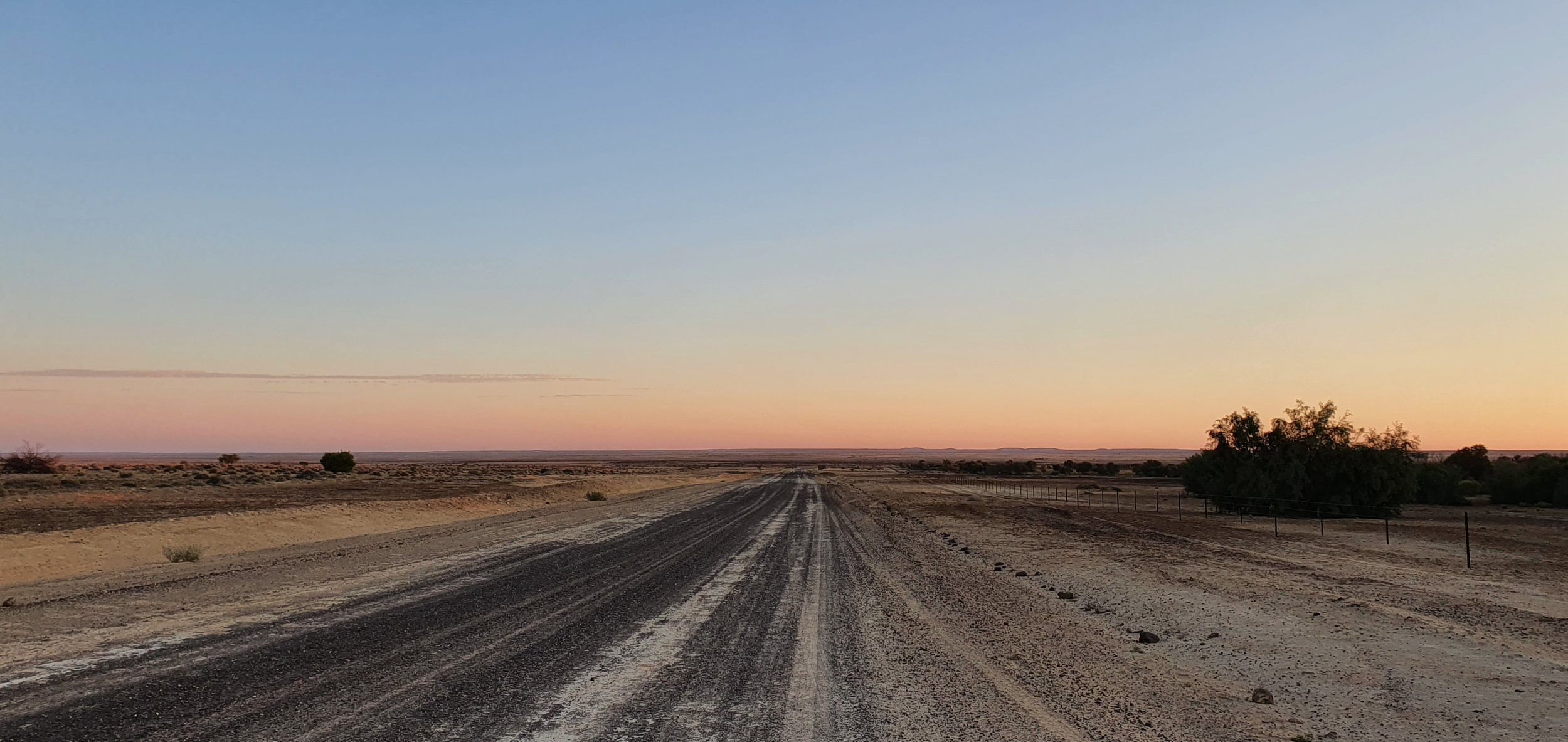Day 4, Sept 30
The journey up on Day 2, plus a full day 3 in the Mungerannie region had delivered us all of the local targets, so we hit the road pre-dawn to head even further north.
Sunrise at Mira Mitta bore was spectacular. The first rays of light were peeking above the horizon and filtering through steam rising from the bore in the cool morning air.


We didn’t stop, but did note yet another Grey Falcon site north of Mungerannie, and 30mins later, about 50km along the track, we pulled over at another waterhole, where the golden light behind us made for wonderful viewing of Pink-eared Ducks, Zebra Finch and Budgerigars. Sadly I am not sufficiently good a photographer to have taken full advantage.




In any case we had more important targets and needed to get north sooner rather than later. Day 4 in our itinerary had loomed large, with possibly the two hardest birds of Mike’s 12 targets the main species we were seeking today: Grey Grasswren and Yellow Chat. Both are highly localised up here, and the former a notorious skulker. Michael Greenshields had messaged us during last night’s dinner to say that he and his tour group had dipped on both. Hmmm.
At around 8am we rolled along the Inside Track to a large spot of lignum where the tentacles of Goyder’s Lagoon just reach the track. Two hours of walking through the lignum listening intently gave us numerous White-winged Fairywrens, but no sign of any Grey Grasswrens. We returned to the Kluger where it was clear the crack in the windscreen had continued to grow, so we added some duct tape, then somewhat despondently and confidence dented, carried on north to another site. Would we dip on the grasswren and significantly dent Mike’s record chances? Would we lose the windscreen? Both seemed distinct possibilities.
The lignum at the next site was denser so difficult to access and there seemed to be less of it, so first impressions were that this appeared much less promising than the spot we’d dipped at. Nevertheless, with few other options for Grey Grasswren, we needed to give this a good crack. Following the dry channels between the lignum it seemed bird-free, but then at one point I thought I heard a squeak. Could it be a grasswren? I played the song on my phone and sure enough it was answered. Mike had heard it too and we stared at the lignum intently. A shape was moving deep inside, and then, oh joy, two birds popped up to the top of the bush. Grey Grasswren is not only rare and skulking, it is arguably the most distinctive looking, with a unique facial pattern that they showed off well in our binocular views, though not for long enough even for record shots. When we tried to track them down for the chance of a pic, they completely disappeared and we could not longer even hear them.
Rather than chase them about, I returned to he car and grabbed a couple of deck chairs and some cold beer. We sat and watched the original patch from the comfort of our chairs, basking in our success, but eventually decided it was time to move on. We still had another potentially tricky bird, about an hour’s drive away from here and the breeze was getting up again.
Back on the main Birdsville Track we headed east until we reached another minor turnoff, a rough track through the gibber leading to Pandiburra Bore. Partway along we flushed a likely looking chat and were very pleased to find another Gibberbird, this one more photogenic than yesterday’s.
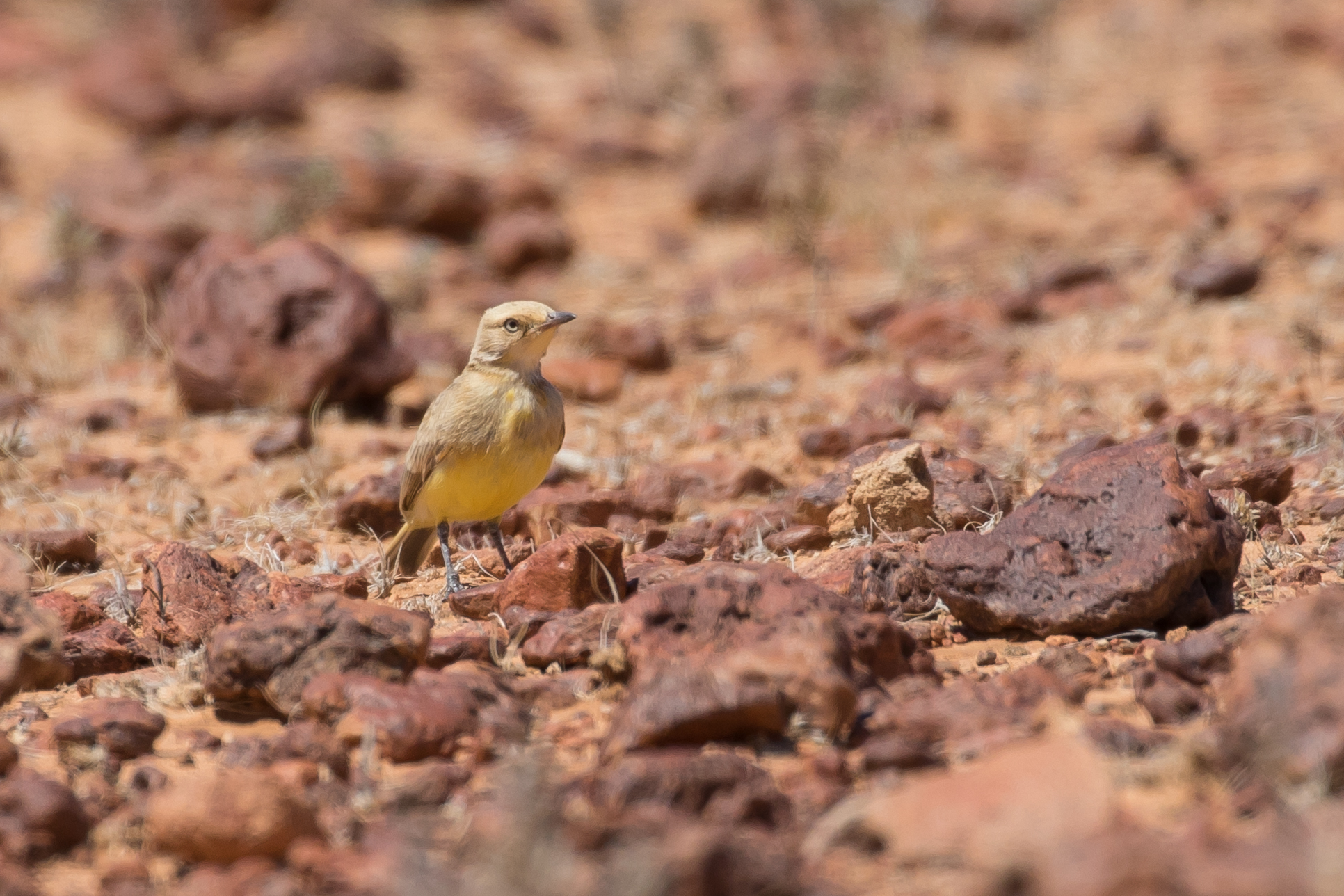
By the time we reached Pandiburra it was just after midday and the breeze was now very windy. Small birds in the reedbed, like our next quarry, Yellow Chat, would almost certainly be hunkered down and very hard to see. And so it proved. For two hours as we worked back and forth and even entirely around the swampy area, we noted a number of conspicuous species to add the trip list with Glossy Ibis, Sharp-tailed Sandiper, Wood Sandpiper, and distant White-necked Heron all new. But there were no small birds visible in the reeds, swaying wildly in wind.
Following our circumnavigation, studiously avoiding getting boots wet, we were walking back up the western side of the reedbed when some snatches of song sounded promising. I played the call on my speaker and we were now sure we could hear a Yellow Chat singing deep in the reeds. There was only one thing for it, we needed to get closer. Picking our way through the swamp and ignoring our waterlogged boots and trousers, we almost reached the reedbed and tried again. But our venture into the swamp was to no avail. A bird continued to sing despite the blustery breeze, but it was almost certainly on the other side.
Undeterred we retreated to drier ground then walked all the way around to the other side, and then once again waded through the swamp to get closer to the reeds. Now we could hear it more clearly and then, as he scanned across Mike announced joyously that he had it! I followed his directions, sweeping my bins across the face of the reeds and landed them on a lovely male Yellow Chat, with his black gorget facing us, perched in the open about 50m sway. Not a lifer, or even a state tick, but my first adult male, and more importantly a clean-sweep of Mike’s key targets. More high-fives and a happy retreat through the swamp, damp feet and clothing compensated by the mission accomplished.






Back on the Birdsville we drove the remaining 100km to the border, filled in our Qld covid entry forms and set our swags in the caravan park. The pub was a mere 100m away and we enjoyed a few bevvies and an excellent steak each in the knowledge that we had now seen all of Mike’s main 12 targets.
A night drove along the highway revealed a few critters but nothing unusual, and certainly the Bilby or Kowari we had hoped for.
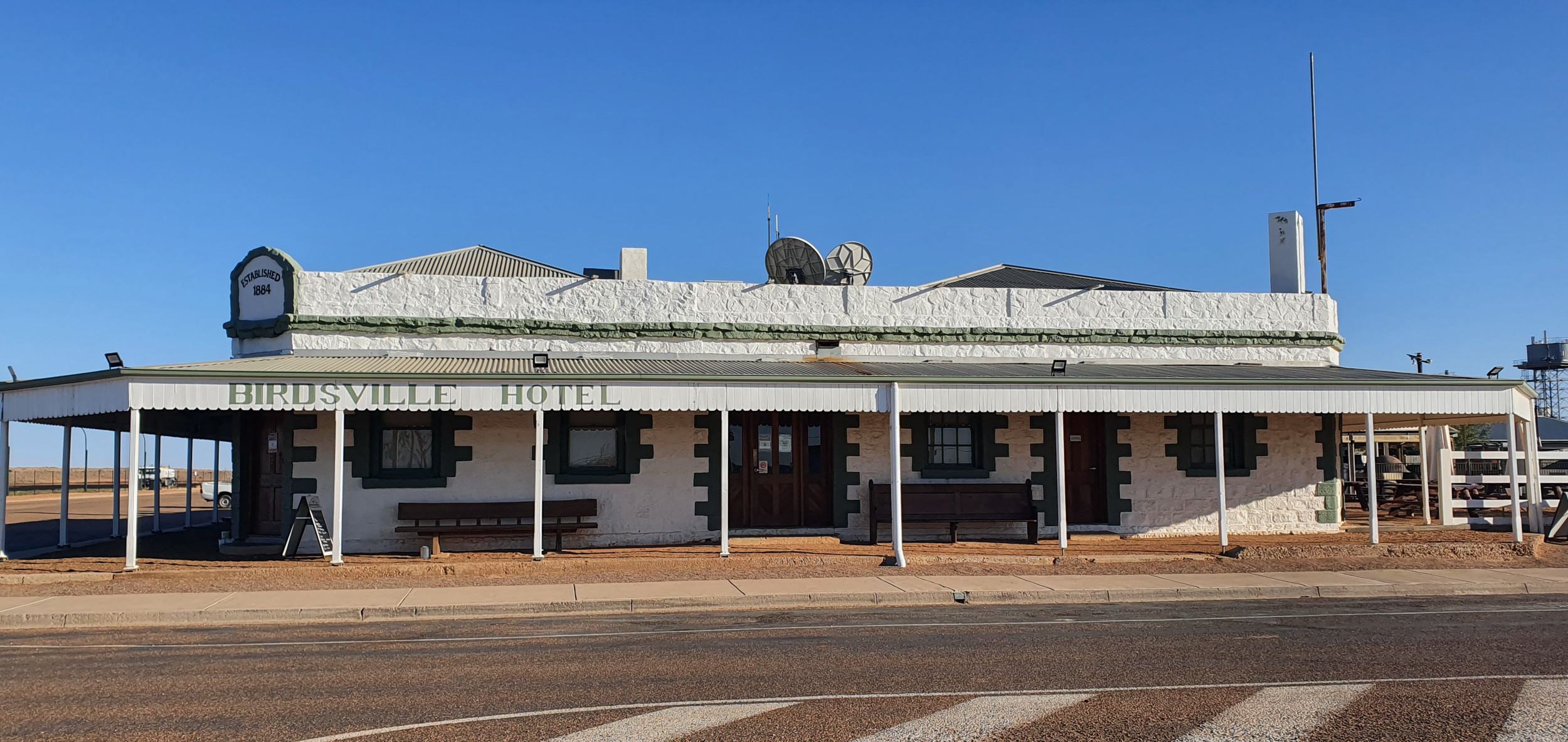
Day 5, Oct 1
Before heading anywhere we needed fuel, and the only garage did not open til 8am. So we had a relative lie-in, I made some breakfast (fried eggs) on the stove, and we birded by the billabong. It was pretty quiet and I was glad when we could refuel and strike out on the next, more speculative leg of our trip. Because of our success with the Birdsville target we now headed east on the Birdsville Development Rd for 115km then south on the Cordillo Access Rd, taking us back into SA towards Innamincka, the state’s most north-easterly town.


We drove continuously, stopping occasionally to switch drivers and stretch our legs. We saw few other cars, especially once we turned south to head back into SA. A brief stop at one point yielded a very confiding Cinnamon Quail-thrush who posed nicely.

Otherwise we whiled away the hours by contemplating important existential questions such as which is the greater Knopfler guitar solo: Telegraph Rd or Sultans of Swing (in case you were wondering, Mike reluctantly conceded it is in fact Sultans). As we hit the border the endless gibber gave way to “valleys” of stony ground and dried vegetation between steep, dusty red sand dunes. I tried to get an atmospheric photo to capture the harsh beauty, but could not capture it adequately.

We remained alert at the sporadic creek crossings where we hoped for Bourke’s Parrots, Black Honeyeaters or maybe even a Letter-winged Kite. At Marianna Creek crossing with a billabong just upstream a pair of Brolgas displayed to each other, but we did not find any Bourke’s or Black Honeyeaters.



We saw little else of note until we drove across yet another dry creek bed and and decided it was finally time (around 2pm) to stop for lunch. We spied a convenient shady acacia and I edged the Kluger off the road and into the shade. As I did so, a parrot flushed and flew low to the next tree about 20m away, calling softly as it did. It looked and sounded unfamiliar to me, but Mike was immediately on the case — he suspect Bourke’s Parrot. His suspicions were confirmed seconds later as we relocated it and I bagged my first lifer of the trip. In fact after a quick lunch we both wandered around the creek bed and across the “Bourke’s paddock” and located 7-8 of these shy, subtly beautiful, outback birds. We noted this spot after the fact as Dripie Cree, about 70km north of Innamincka.


Thereafter we bombed straight through to Innamincka where we refueled, bought our national park pass online and headed 100km north-west to Coongie Lakes. This almost-permanent freshwater wetland system in the middle of a dry, salty desert, is fed by Cooper Creek in the wet season, and is sufficiently large and deep that it rarely dries out. After rain it is often cut off from Innamincka by muddy or water-logged tracks, so it’s rarely visited, but it is a special part of the state and a bucket-list destination for those who love the outback because of the surprising congregations of life that explode when and where there is water in the desert. We were lucky in that the tracks had dried sufficiently after rain a fortnight ago that we were able to get in, even in my soft-roader.


We noted a few more Bourke’s flush from the trackside as we drove in, with the sun having set just before we arrived. By the torchlight and car headlights, the combination of which seemed to attract 99% of the nocturnal biomass in the area to our faces, we made our camp, reheated some tins on the stove for dinner, then set out for some night birding.
We were excited to try for Barking Owl here, allegedly the best place in SA to find them. Disappointingly, we did not hear a peep. Owlet-nightjars were everywhere, and we had a couple of Barn Owls, including one that camp right over our camp, but no “Woof-woof” was to be heard other than my speaker :-(.
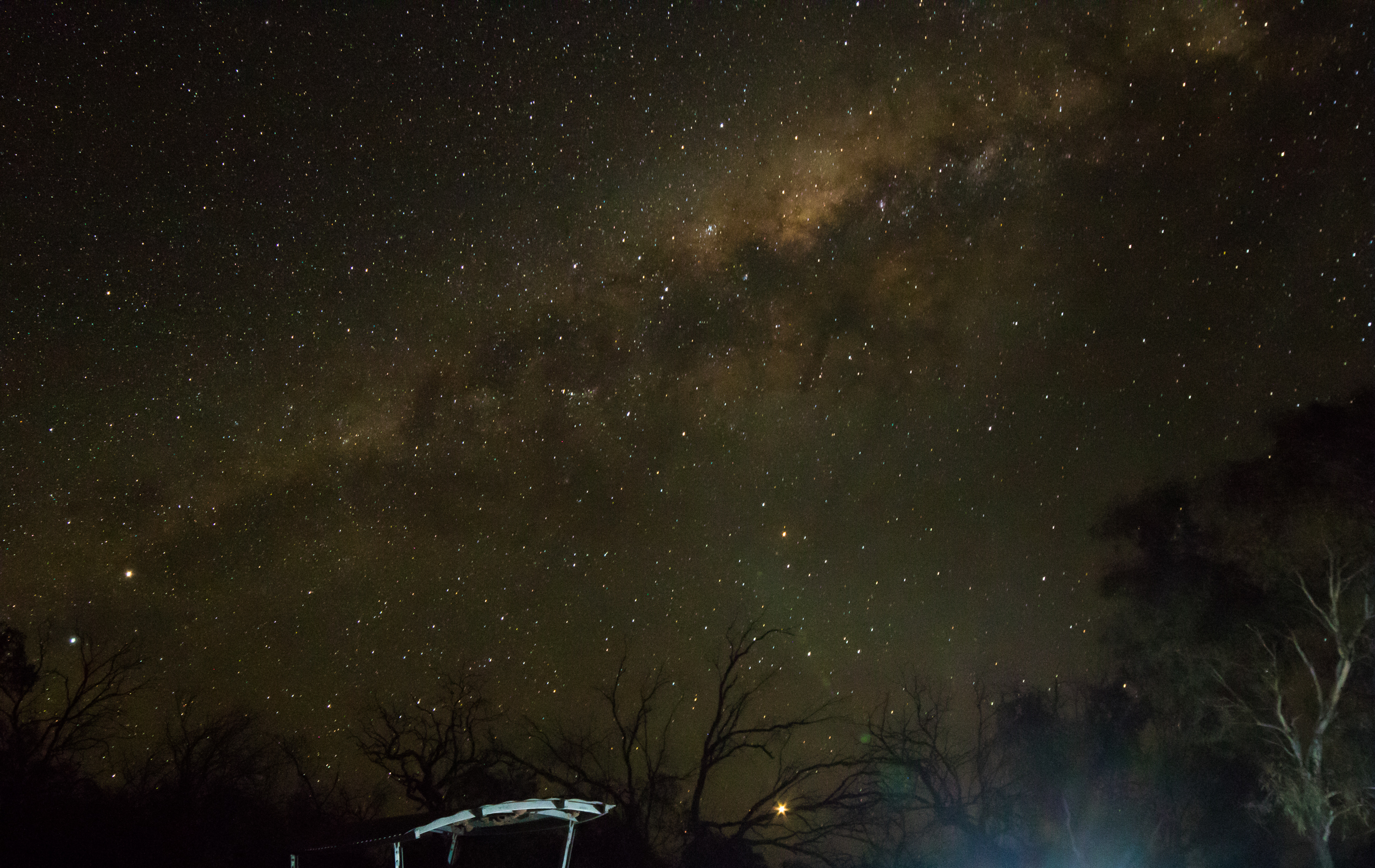
Day 6, Oct 2
Overnight as I dozed I tried to keep an ear out for Barkers, but still heard nothing. Black-faced Woodswallows, White-breasted Woodswallows and Tree Martins swooped over our camp as we had a simple breakfast, then we set out in the car to explore the lake, which proved to be very birdy.




Some of the highlights of a list comprising 64 different species in just an hours’ birding included a few Freckled Duck, a couple of large flocks of Red-necked Avocet, Black-tailed Native-hens, Nankeen Night-heron, White-backed Swallow. Some Fairy Martins posed sweetly in the morning light allowing us unprecedented close views.




As we drove over the crest of a dune a pipit flushed from the track and I stopped to see if it was still close. We saw some movement in the bushes and both focused our bins on… a Spinifex Pigeon. Wow! Although Mike had had one in the APY lands for his Big Year I was not aware that they occurred anywhere else in the state. Subsequently we discovered that there are sporadic records from Coongie, just about the southern-most place they ever recorded. Spinifex Pigeon is a cracker of a desert pigeon with an amazing funky hairdo, sandy plumage and striking facial pattern. It was only a few metres from the car, so we enjoyed the unexpected bonus — my second lifer of the trip — and bagged some decent images. This was the clear highlight of a wonderful morning, a pleasant change to be searching for abundant water-birds instead of scouring empty gibber-plains through the heat-haze.





We tidied our camp up and set off back towards Innamincka where at the local watering hole a pub meal and beer was very welcome. However desirable a nap would have been right now, we were also keen to check out some of the local actual waterholes. In particular Cullyamurra Waterhole is a deep billabong on the Cooper that almost never dries out. This, too, was a good choice and we had an excellent afternoon birding along the southern bank, finding Restless Flycatcher (one I still needed for my year list), Owlet-nightjar, Red-rumped and more Bourke’s Parrots, several Australian Pratincoles, and an outstanding and very striking Mulga Snake (King Brown). Mike was somewhat bemused that I decided to approach low down from the front to get a face-on picture. He stayed in the vehicle!


At one of our stops along the bank, as we returned to the car there was a major fright in store (even more-so than the snake!). The Kluger was completely dead. Unable to turn over, not a light on dash, nothing! We both quickly processed the worrying calculus and consequences of being stranded 20km from Innamincka. Fortunately I realised almost immediately that I’d been in this situation before (see Walnut Whipbird). The bumpy track had presumably dislodged my battery terminal, and sure enough after a good whack back into position the interior lights came on and a fan started to whirr. The Kluger’s v6 turned over just fine, and Mike and I breathed a collective sigh of relief.
Back in Innamincka we made our way to the Town Common, a stretch of gums along the Queerbidie Waterhole (another of the deep billabongs on the course of the Cooper). A Chirruping Wedgebill posed beautifully on the track side on our way to a lovely shady spot under huge river red gums where we made our camp.
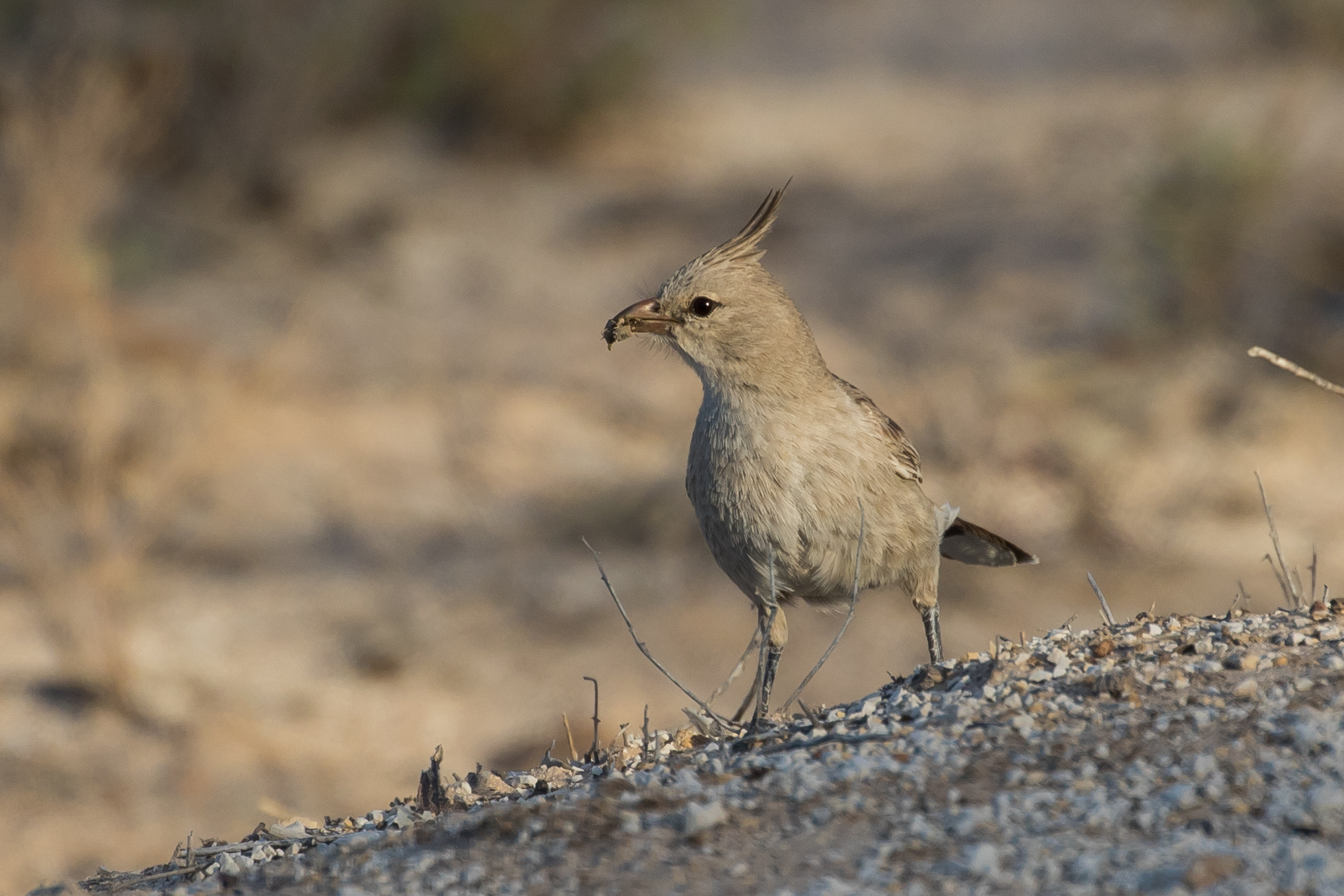
The most recent ebird record of Barking Owl in the state was from a month or two back, right here, so this was our back-up plan after dipping at Coongie. After dinner and sunset we set out night-birding again. Around the common, just like last night, Barn Owls and Owlet-nightjars were obvious, but once again we had not sniff of a Barker. We drove upstream to the bridge and tried there, and then, wanting to make sure we gave it the best possible chance, went back to Cullyamurra Waterhole and tried several places along the southern bank. Although the Kluger once again did its dead car act at one of these spots, at least we were not unduly alarmed because we knew the exact cause from this afternoon’s scare. We retreated to Innamincka defeated by Barking Owl. This was disappointing but at least we could say we had given it a good crack.


Day 7, Oct 3
Away for a week now, we came to a leg of the trip I had been particularly looking forward to, driving the Strzelecki Track. This famous outback track heads south from Innamincka through the Strzelecki Regional Reserve (Strzelecki Desert) to Lyndhurst along an old stock-route pioneered by bushman Harry Readford. In 1871 Readford stole 1000 head of cattle from a station in western Qld and drove them south through the channel country (where Burke and Wills had perished only a decade earlier) to Marree where he sold them for £5000 — more than a quarter of a million dollars in today’s money. Although eventually he was found out and arrested, the jury was so impressed with his audacious feat they acquitted him!
I had first planned a trip up the Strez in 2016 (aborted because of rain), then again in 2017, when Paul Coddington and I decided to do the Birdsville instead. Fast-forward to 2021 and there was state government money and a fast-paced program to seal large sections because it serves the Moomba Gas Fields. I was keen to experience the outback track prior to its “gentrification” so 2021 might be my last chance.
Letter-winged Kite is one of the key birds from the Strzelecki, historically much more prevalent here, where they often nests in stumpy acacias in the dry creek-beds, than a mere 150km west on the Birdsville. Unfortunately we were not aware of any nest trees or even any sightings this year, but it remained our only chance, and as with the Barkers, we were determined to give it our best shot.
The day started out well: at a spot only 50km or so south of Innamincka a black-and-white kite was roosting near a windmill. Sadly on closer inspection this was (yet again) a Black-shouldered Kite. But the spot itself was very productive. Another Chirruping Wedgebill trilled its song, then as I scanned for the Wedgebill, one of my favourite taxa came into view — Australian Bustard!! I tried to track it down for a photo opportunity but it was very wary, keeping a large distance. A few flocks of Budgies buzzed about the scattered trees and gave some photo ops too.




Very disappointingly, that was about as good as it got for the rest of the day. At Strzelecki Crossing it was very dry and a walk along the wide, sandy creek bed produced White-backed Swallows and not much else. Montecolina Bore is historically a fantastic spot. A natural warm spa attracted tourists and the overspill from the bore, like those on the Birdsville, created a thriving wetland. We had not been aware, however, that two years previous the bore had been capped and shut off. The official line is that there was insufficient funding in National Parks to prioritise the “maintenance”, but given that maintenance for a self-pressured bore is presumably almost zero, a more likely explanation lies in the fact that, under pressure from the gas and mining interests that pay for their water allocations, the government decided that National Parks should also have to pay for the artesian flows from the bore. This “levelling of the playing field” between mining and conservation interests could only ever result in one outcome for the cash-strapped Nat Parks service.
As we approach Lyndhurst a line of cars and trucks appeared in the distance — a traffic jam in the desert? As we approached we realised the reason why: there was an upturned car off the side of the track and people gathered around someone lying on the ground. We conferred with some who were still with their vehicles, and were told that a couple had been driving somewhat erratically earlier and had come to grief — perhaps a blown tyre — when their small, 2WD car went out of control off the track and rolled three times before coming to a halt. The guy amazingly walked away, while the girl — who cannot have been wearing a seat-belt — was thrown from the car and probably had a broken leg, but mercifully was alive. We realised there was nothing we could do that would add to the help already being provided and so carried on to Lyndhurst, passing an Ambulance and Police vehicle heading at high speed north. At least proper help was not far away.
Lyndhurst no longer offers petrol, only diesel, so we had no choice but to drive further south where we checked into the hotel/motel in Leigh Creek, a bizarre almost-ghost-town built entirely in the 1960s when it was discovered that the original Leigh Creek lay directly over where they wanted to expand the coal mine that the town serviced. As I mentioned earlier, coal-mining at Leigh Creek ceased in 2015 when the Port Augusta coal-fired power station closed, and now the town caters for less than a third of the original population and continues to dwindle.
We were able to shower and rest on a comfy bed (at least, it felt comfy compared with my swag!) and then met up in the pub for a meal and a few drinks where we were able to put the world right.
Day 8, Oct 4
We had one further bit of birding planned for this morning. If the weather seemed conducive — and this meant not much more than a gentle breeze — we would go north back to Witchelina and try for photos of Thick-billed Grasswren. Although as I packed up the Kluger for the past time, the wind was decidedly more than a gentle breeze, it did seem to be milder than a week earlier, so we agreed on the drive north back to Farina and Witchelina. We did, in fact, succeed with our quest for TBGW photos. Unlike a week earlier the wind was not so strong as to keep them from the tops of bushes, but they stayed rather distant — as we had been forewarned the Witchelina grasswrens are wont to do, so the pics are decided of the “record” variety.

Now it really was time to roll back home. We took the slightly more scenic inland route through Ororoo and Claire, me hoping for one last year tick (Spotted Harrier), but by the time we were south of Peterborough it was cloudy, drizzling and most definitely not raptor weather. I dropped Mike at his home late afternoon and rolled into my own drive at about 6pm. Amazingly the windscreen had held together, my Bridgestone Duelers (tyres) had just about held together on the stony tracks, and most importantly, we had seen all of Mike’s main 12 targets. He therefore finished the trip on 373, just one shy of the state record. Either of our final targets, Barking Owl and Letter-winged Kite, would have been enough to equal the record and clearly getting both was far too much to ask for, however exciting it would have been for Mike to break the record on our trip. That event would have to wait a couple of weeks for trip up to the mallee.

